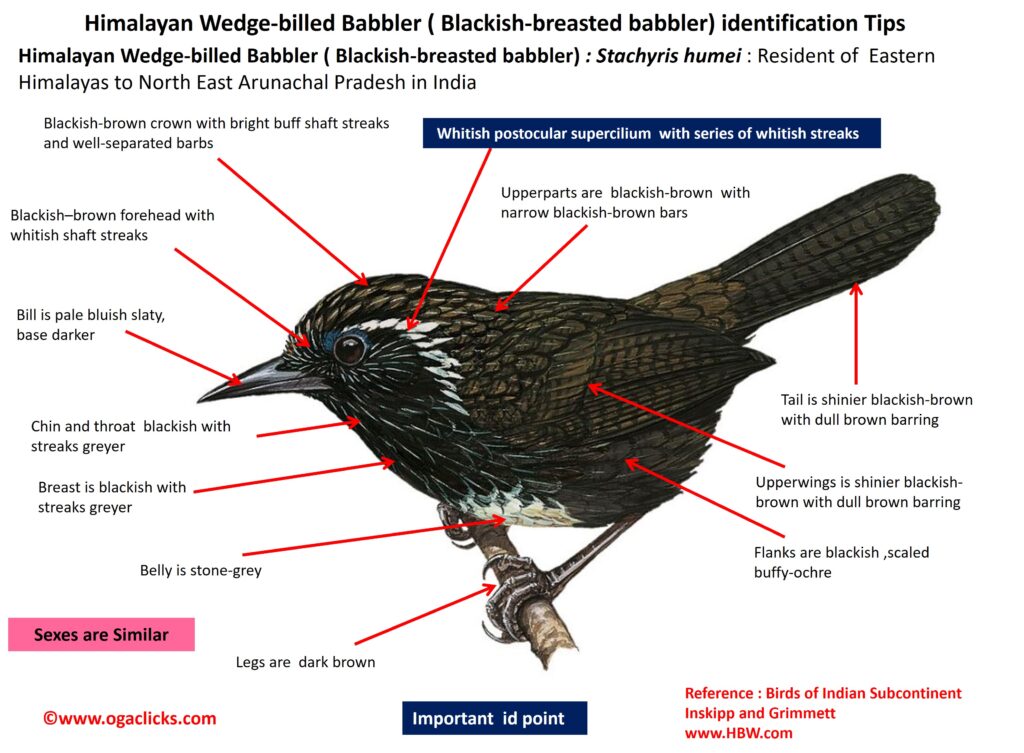
Himalayan Wedge-billed Babbler/Sikkim Wedge-billed Babbler Stachyris humei
Etymology
- Stachyris : Greek word stakhus –ear of wheat; rhis -nostrils;opsis- Appearance { reference to the shape of the opercula or scales almost closing the nostrils}
- Humei : Named after British ornithologist Allan Octavian Hume (1829–1912)
VernacularNames : Naga: Tinglin-rui-gadeba
Distribution in India: Resident of Eastern Himalayas in India.
Description: Size of 18 cm. It is a blackish babbler with wedge-shaped bill, and subtle plumage pattern of buff streaks above and minute grey scaling below. Its entire upperside is blackish brown, each feather internally buff. Feathers of lores and forecrown have whitish shaft streaks, those of mid-crown to mantle with bright buff shaft streaks and well-separated barbs, those of back to uppertail-coverts similar but duller buff-brown and with narrow blackish-brown bars. Its upperwing and tail are shinier blackish brown with dull brown barring. Its head side has reduced internal markings on lateral crown producing effect of vague blackish lateral crown stripe. It has whitish postocular supercilium breaking up on neck side into series of whitish streaks. The rest of the face (ear-coverts, cheek, submoustachial area) and chin are blackish-brown with whitish shaft streaks. The throat to upper belly is similar but streaks are greyer and with very narrow pale stone-grey edges producing barely perceptible scaling. Its central belly is irregularly stone-grey, lower flanks, lower belly, thighs and vent are scaled buffy-ochre and blackish-brown. . The bill is pale bluish slaty, base is darker. Its legs are powerful, dark brown. Both the sexes are similar.
Habitat: It is found in floor and understorey of broadleaf evergreen forest, bamboo brake. It is found at 900–1950 m and at 1100 m in winter.
Food habits: It is arboreal at times. Often hunts in quite dense undergrowth near streams.
Breeding habits: Unreported yet